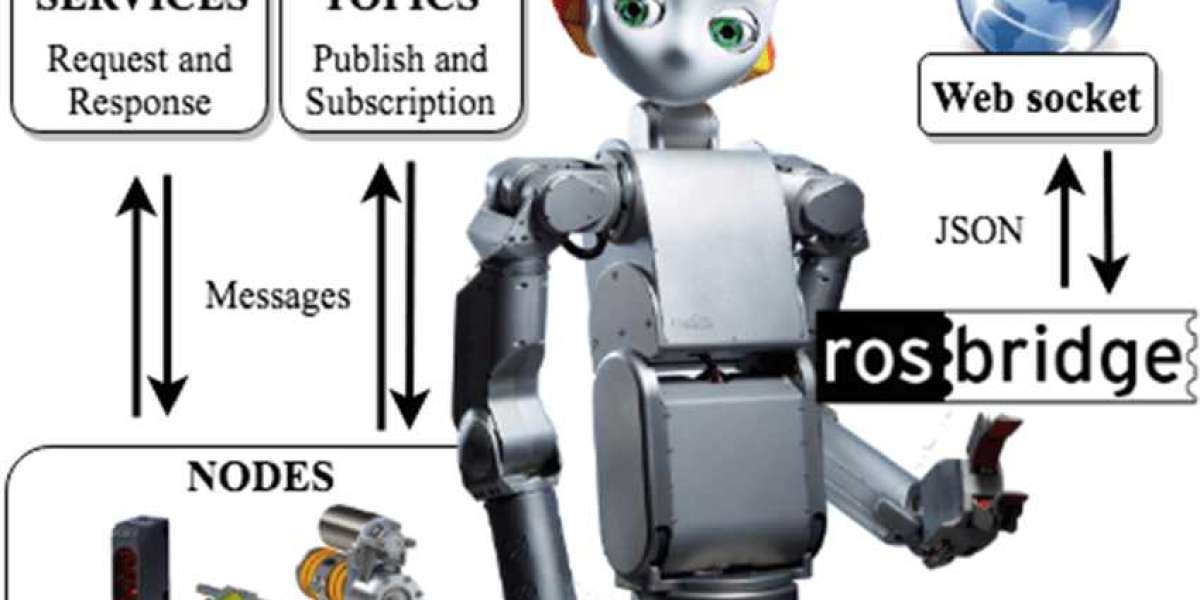The Robot Operating System (ROS) is a transformative middleware that goes beyond being a mere operating system, providing a robust framework and toolset for developing and constructing robotics systems. Acting as a structured communications layer atop host operating systems within a mixed compute cluster, ROS is versatile and language-neutral, supporting various programming languages. At its core, ROS operates at the messaging layer, consisting of programming tools and code that facilitate the execution of robotic actions, including the necessary infrastructure for message passing between processes. This design enables the seamless integration of diverse components and subsystems operating in different programming languages, contributing to its widespread adoption.
The global ROS market is experiencing significant growth, driven by the increasing adoption of industrial automation and substantial investments in research and innovation. Forecasts indicate that the ROS market will reach approximately US$ 438 million by 2027, with a compound annual growth rate (CAGR) of 9.2%. This expansion is primarily fueled by the demand for advanced robotics technologies across various sectors, including healthcare, manufacturing, and commercial industries.
ROS simplifies the complexities associated with software engineering in robotics projects, accelerating development speed and enabling efficient redistribution. Its integrated framework and toolsets are particularly beneficial for researchers and developers, making ROS an attractive choice for innovation activities. The healthcare sector exemplifies this trend, with robots increasingly being integrated into day-to-day operations to enhance medical and healthcare services. Similarly, the rise of manufacturing units globally is driving the automation of business processes, with companies like Fanuc Corporation and ABB investing heavily in RD to develop more user-friendly and affordable robots and their operating systems.
Despite its advantages, the ROS ecosystem faces challenges, particularly concerning security issues in design and implementation. To address these concerns, many ROS suppliers focus on providing protected and secure systems, while research organizations strive to develop more stable ROS versions with improved application programming interfaces (APIs).
The deployment of industrial and commercial robots is a significant trend bolstering ROS market growth. According to the International Federation of Robotics (IFR), over 1.9 million new industrial robots were expected to be deployed worldwide by 2019. The Asia-Pacific region, including countries like China, South Korea, Taiwan, Thailand, and Singapore, has seen robust growth in robot installations. European countries such as Germany, Italy, France, and the Nordic nations are also embracing robotics technology.
Get Sample PDF Copy: https://shorturl.at/NTBCq
The ROS market is segmented by type (commercial and industrial robots) and application (commercial and industrial sectors). Commercial robots are further divided into stationary and portable robots, while industrial robots include SCARA, articulated, Cartesian, linear, and other types. Applications span healthcare, hospitality, retail, agriculture, automotive, electronics, food and packaging, logistics, and more. Geographically, the market includes North America, South America, Europe, Asia-Pacific, and the Middle East Africa.
Key players in the global ROS market include ABB Ltd, Omron Adept Technologies Inc, Clearpath Robotics, Cyberbotics Ltd, Fanuc Corporation, Husarion, Kuka AG, iRobot Corporation, Rethink Robotics, Stanley Innovation, and Yaskawa Motoman. These companies are pivotal in advancing the capabilities and applications of ROS in various industries, driving the market's continued growth and innovation.



